Share This Page
Topic Summaries
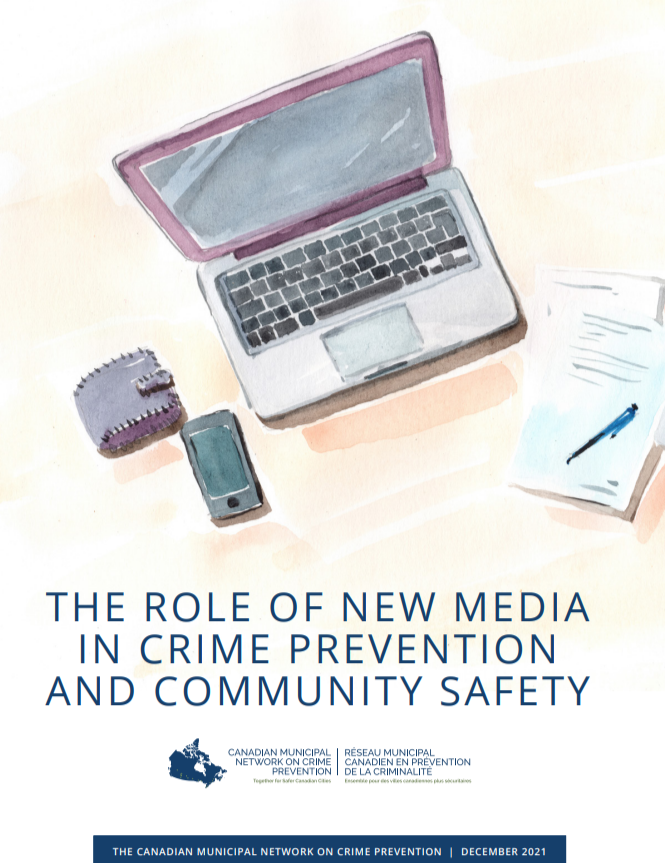
The Role of New Media in Crime Prevention and Community Safety
Given the substantial reach of new media, conversations about violence now have the potential to prompt public understanding on a new scale as individuals and organizations across the globe can engage in discussions which would traditionally require in-person meetings. This topic summary is intended to guide potential applications of these forms of media in violence prevention and community safety. Building on long-established and new initiatives in a variety of spaces, it then outlines foundational elements of successful social media campaigns.
Click here to view the Topic Summary.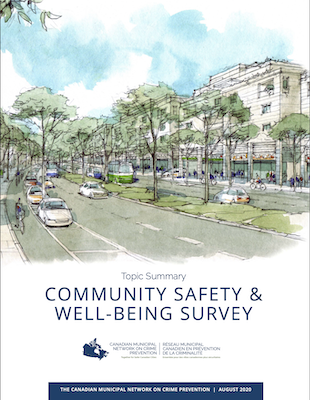
Community Safety & Well-Being Survey Tool
This topic summary is intended to serve as a resource for communities seeking to collect data on factors related to Crime Prevention and Community Safety & Well-Being (CP/CSWB). The document provides a general overview of the importance of evidence-based, informed decision making when it comes to planning, selecting programs, and developing policies designed to prevent crime and promote healthy and safe communities. The topic summary includes a survey tool which has been designed by the Canadian Municipal Network on Crime Prevention (CMNCP) to collect data on several domains related to CP/CSWB.
Click here to view the Topic Summary.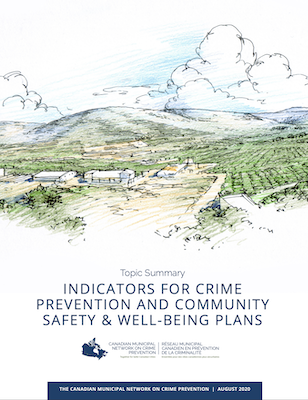
Indicators for Crime Prevention and Community Safety & Well-Being Plans
Recently, there has been a push across the globe for communities to develop local approaches to prevent crime and promote community safety and well-being. In some locations, such as Ontario, Canada, governments have made the development of these plans a legislative mandate. Given that the purpose of Crime Prevention and Community Safety & Well-Being plans (CP/CSWB plans) is to create positive, long-lasting change in the community, it is imperative to establish a reliable way to evaluate whether these changes are actually occurring and where additional action may be needed. Utilizing indicators is an important part of this process. In establishing a list of indicators that will be used to evaluate a community’s CP/CSWB plan, there are a number of elements that must be taken into consideration. These are discussed in greater detail in this Topic Summary.
Click here to view the Topic Summary.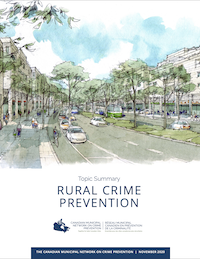
Rural Crime Prevention
The purpose of the topic summary is to provide general guidelines on how to best reduce crime and build capacity among rural communities. Moreover, it aims to reduce perceptions of fear and insecurity in rural areas. This will require the development of partnerships between stakeholders and collaborative approaches that will allow for the improvement of community safety and well-being in the short and long-term.
Click here to view the Topic Summary.
Practice Briefs
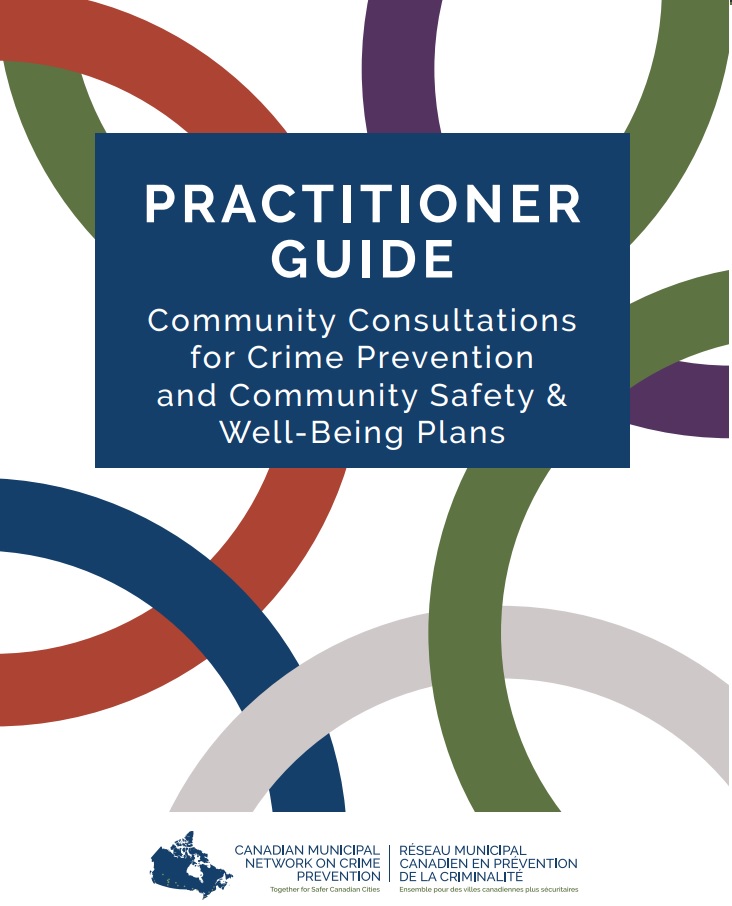
Practitioner Guide on Community Consultations for Crime Prevention and Community Safety & Well-Being Plans
CMNCP has developed a practitioner guide on how to organize community consultations for crime prevention and community safety and well-being plans.
Click here to view Practitioner Guide.
PEACEFUL HOMES: A Guide to the Prevention of Violence in the Home During and After Lockdowns
CMNCP has developed a practitioner guide on preventing violence in the home during and after lockdowns.
Click here to view Practitioner Guide.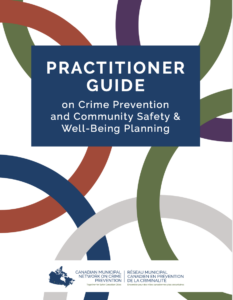
Practitioner Guide on Crime Prevention and Community Safety and Well-Being Planning
CMNCP has developed a practitioner guide on crime prevention and community safety and well-being planning.
Click here to view Practitioner Guide.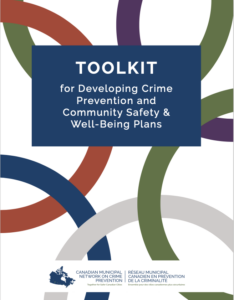
Toolkit to the Practitioner Guide on Crime Prevention and Community Safety and Well-Being Planning
CMNCP has developed a toolkit for the practitioner guide on crime prevention and community safety and well-being planning.
Click here to view the toolkit.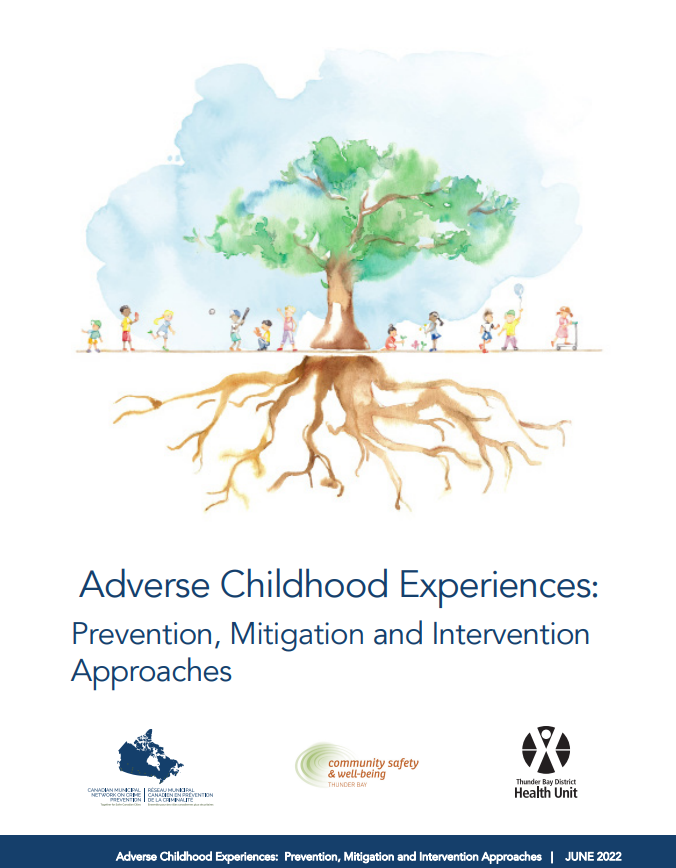
Adverse Childhood Experiences: Prevention, Mitigation and Intervention Approaches
Recognizing the significant impacts that ACEs have on health, safety, and well-being, the Thunder Bay District Health Unit (TBDHU), Community Safety & Well-Being (CSWB) City of Thunder Bay, and the Canadian Municipal Network on Crime Prevention (CMNCP) share a joint interest in promoting the prevention and mitigation of ACEs in communities.
Click here to view Report.
Working With Elected Officials
CMNCP has developed a practice brief to support members in working with elected officials.
Click here to view Practice Brief.
Cross-Sector Collaboration
CMNCP has developed a practice brief to support members in working with developing cross-sector collaborations.
Click here to view Practice Brief.
Action Briefs
These summaries provide easy access to evidence on crime prevention and illustrate actions to be taken by elected politicians, senior municipal officials, police executives, community safety coordinators, and citizens.

What is effective crime prevention for municipalities? - Action Brief (2018.1)
Decision makers in Canadian municipalities can use effective crime prevention to reduce street violence and other violent crime significantly – thus saving lives, stopping pain and suffering, and reducing taxes. However, they must come to grips with the proven prevention solutions and make the investments to implement them.
Click here to view Action Brief.
The Relevance of the UN Sustainable Development Goals to Crime Prevention in Canadian Municipalities - Action Brief (2018.2)
To achieve these targets, the SDGs require all orders of government to implement more e ective ways to stop violence before it occurs.
Click here to view Action Brief.
The Importance of Data in Crime Prevention: Diagnosis and Evaluation - Action Brief (2017.2)
Effective crime prevention strategies begin with diagnosing the incidents and causes of crime through local safety audits. Municipalities need to invest in identifying the local causes of crime in order to make informed decisions about priority issues.
Click here to view Action Brief.
Municipal Crime Prevention Offices: Importance, Role, Function, and Models - Action Brief (2017.3)
Feedback from across the country shows that Canadians increasingly demand that ALL orders of government dedicate resources to where we can have the greatest impact for the most number of people in both the short and the long-term.
Click here to view Action Brief.
Recent Development in Effective Crime Prevention - Action Brief (2016.0)
Municipalities face street violence, violence against women and property crime as well as unsustainable increases in policing costs. Scientific evidence confirms that prevention has reduced these problems. The challenge is getting more investment in prevention in more municipalities.
Click here to view Action Brief.
Why Invest in Crime Prevention in Municipalities? - Action Brief (2016.1)
Interpersonal crime does $55 billion in harm to citizens annually. The accumulated evidence justifies smart investments in prevention as the most cost effective way to reduce crime. The majority of Canadians support these investments.
Click here to view Action Brief.
Major Resources that Provide Evidence on Effective Crime Prevention - Action Brief (2016.2)
The evidence on what prevents crime is accessible in a guide to politicians on Smarter Crime Control and on major websites. Proven programs are in sectors such as youth and family services, schools and health as well as in policing.
Click here to view Action Brief.
Examples of Proven Crime Prevention Programs - Action Brief (2016.3)
Examples of successful prevention programs include outreach to vulnerable youth, support for parents, school curricula focusing on relationships, social prevention from hospital emergency rooms and preventive policing.
Click here to view Action Brief.
Comprehensive Community Safety Strategies for Delivering Effective Crime Prevention - Action Brief (2016.4)
Internationally some municipalities have reduced crime by 50% or more by targeting social development and preventive policing into areas of high crime and disadvantage. Their successful strategies included diagnosis and evaluation of results.
Click here to view Action Brief.
Making Cities Safer - Action Brief (2009)
This action brief is organized into two major themes. The first theme, series 1: "Invest smartly in safety for the city", articulates why cities should invest in crime prevention and discusses strategies for ways in which cities can invest in crime prevention. The second theme, series 2: "tackle safety successfully in the city" discusses strategies for improving safety and reducing violence and crime in various populations (i.e., youth and young adults, women, Aboriginal people) as well as reducing property crime and utilizing policing resources more efficiently and effectively.
Click here to view Action Brief.
Policy Briefs
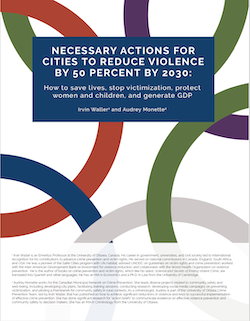
Necessary Actions for Cities to Reduce Violence by 50 Percent by 2030
CMNCP has developed a policy brief on necessary actions for cities to reduce violence by 50 percent by 2030: How to save lives, stop victimization, protect women and children, and generate GDP.
Click here to view Policy Brief.
Increasing Canadian Investment in Crime Prevention in Municipalities
CMNCP has developed a policy brief to demonstrate the need for increased investment in crime prevention in municipalities.
Click here to view Policy Brief.
Websites
We have listed links for websites that may be useful in Canada, USA and internationally. The Action Brief 2016.2 explains ways to use some of the most important Canadian and international websites to advance investment in evidence based crime prevention.
Canadian Links
National Crime Prevention Centre
The National Crime Prevention Centre (NCPC) has put together a list of proven crime prevention programs.
Click here to view websitePolice and Community Research Catalogue
The Police and Community Research Catalogue is a repository of all the policing related research, consolidated and made available to the policing community, policy makers and the public.
Click here to view websitePrevnet
Prevnet provides information on the programs to prevent bullying and promote violence prevention.
Click here to view websitePrevention of Violence Canada
Prevention of Violence Canada promotes the implementation of the World Health Organization´s vision for evidence based crime prevention in Canada,
Click here to view website
USA Links
Center for the Study and Prevention of Violence
The Center for the Study and Prevention of Violence in Colorado vigorously reviewed over one thousand programs that target risk factors before identifying its top eleven Blueprints-certified programs.
Click here to view websiteCentre for Disease Control
The Centre for Disease Control has launched an interactive and user-friendly website on how to implement evidence-based research in policy making.
Click here to view websiteProblem Oriented Policing
The Problem Oriented Policing website compiles data concerning situational crime prevention and proactive policing techniques proven to be effective.
Click here to view websiteUS Department of Justice
The US Department of Justice maintains CrimeSolutions.Gov, which is an evidence-based website with an extensive list of 400 programs and 100 practices.
Click here to view websiteWashington State Institute for Public Policy
The Washington State Institute for Public Policy is an important source for policy makers as it systematically reviews evidence on the cost-benefit of programs that tackle crime.
Click here to view websiteSubstance Abuse and Mental Health Services Administration
The Substance Abuse and Mental Health Services Administration, aims to alleviate the impact of problematic substance use and mental health issues by providing information on research and a variety of services.
Click here to view websiteYouth.gov
Youth.gov brings together 18 federal agencies that aim to support youth services and programs by identifying effective strategies and increasing organizational collaboration to prevent and/or reduce delinquency. They collaborate with the Youth Justice Forum on Violence Prevention.
Click here to view website
International Links
Campbell Collaborative
The Campbell Collaborative is an international research network that produces systematic reviews of the effects of social interventions of crime and justice.
Click here to view websiteEuropean Crime Prevention Network
The European Crime Prevention Network is a knowledge center that identifies good practices, and evaluates and promotes crime prevention activities.
Click here to view websiteUN-Habitat Safer Cities Program
The UN-Habitat Safer Cities program provides guidelines and a knowledge base for municipal crime prevention.
Click here to view websiteWorld Health Organization
The World Health Organization (WHO) has developed a number of useful resources on the prevention of violence.
Click here to view websiteEuropean Forum on Urban Safety
The European Forum on Urban Safety (Efus) is the only European non-governmental organization of local and regional authorities dedicated to urban safety. It includes nearly 250 local and regional authorities from 16 countries.
Click here to view website
Videos
'Redemption: An Old Idea That Still Works'
By: John Carnochan (2014)
Click here to watch video'Why Smart Statistics Are The Key to Fighting Crime'
By: Anne Milgram (2014)
Click here to watch video'How We Turned The Tide On Domestic Violence (Hint: The Polaroid Helped)'
By: Esta Solar (2014)
Click here to watch video'Less Law, More Order: Smarter Crime Control'
By: Irvin Waller (2014)
Click here to watch video'Global Overview of What Works in Violence Prevention'
By: Mark Bellis (2013)
Click here to watch video'Violence Against Women: It's a Men's Issue'
By: Jackson Katz (2013)
Click here to watch video'Let's Treat Violence Like A Contagious Disease'
By: Gary Slutkin (2013)
Click here to watch video'The Cardiff Model For Violence Prevention'
By: Jonathan Shepherd (2012)
Click here to watch video'Community Mobilization'
By: Dale McFee (2012)
Click here to watch video'Violence Reduction: The Shared Agenda'
By: John Carnochan (2012)
Click here to watch video'Words Speak Louder Than Actions'
By: Jeff Perera (2011)
Click here to watch video'A Call to Men'
By: Tony Porter (2010)
Click here to watch video'The Surprising Decline in Violence'
By: Steven Pinker (2007)
Click here to watch video
Selected Publications
- Council of Canadian Academies. (2014). Policing Canada in the 21st Century: New Policing for New Challenges- The Expert Panel on the Future of Canadian Policing Models. Click here to access the document
- Institute for the Prevention of Crime. (2008). Canadian Strategies and Practices (Making cities safer; no. 2). University of Ottawa, Ont: Institute for the Prevention of Crime.
- Institute for the Prevention of Crime. (2007). International Strategies and Practices (Making cities safer; no. 1). University of Ottawa, Ont: Institute for the Prevention of Crime.
- Institute for the Prevention of Crime. (2007). Building a Safer Canada (National Working Group, no. 1). University of Ottawa, Ont: Institute for the Prevention of Crime.
- Ministry of Community Safety and Correctional Services. (2015). Community Safety and Well-Being in Ontario. Click here to access the document
- Ministry of Community Safety and Correctional Services. (2012). Crime Prevention in Ontario: A Framework for Action. Click here to access the document
- Truth and Reconciliation Commission of Canada. (2015). Calls to Action. Click here to access the document
- Waller, I. (2006). Less Law, More Order: the Truth about Reducing Crime. Westport, Conn: Praeger
- Waller, I. (2014). Smarter crime control: A guide to safer futures for citizens, communities, and politicians. Lanham, Maryland: Rowman and Littlefield.
References for Crime Prevention Evidence for Canada, USA and Internationally
We have compiled an extensive list of bibliographical resources, including references for crime prevention evidence in Canada, USA, and Internationally.
References for Crime Prevention Action Briefs (2018: 1-2)
References for Crime Prevention Action Briefs (2017: 1-4)
References for Crime Prevention Action Briefs (2016: 1-4)




